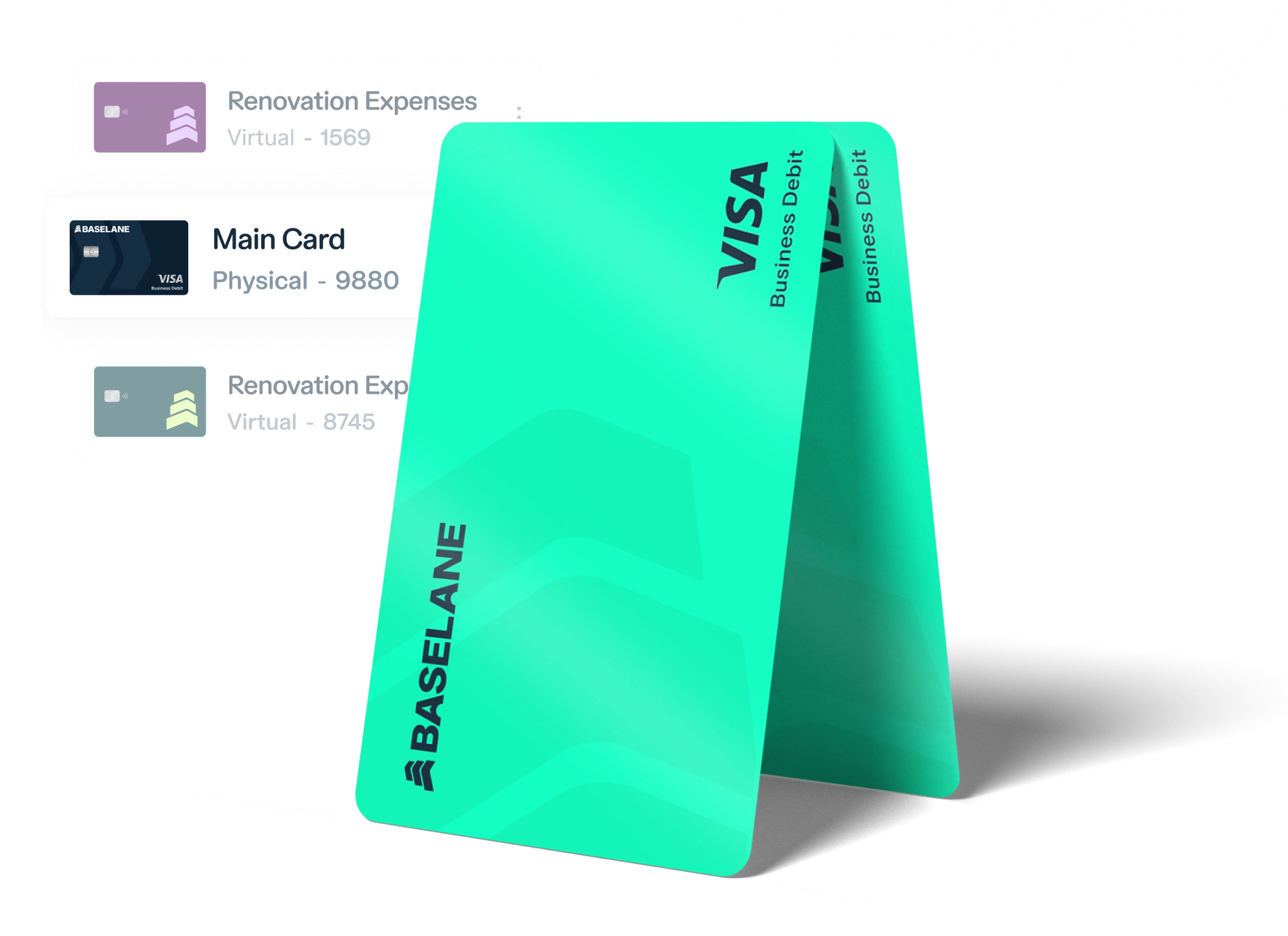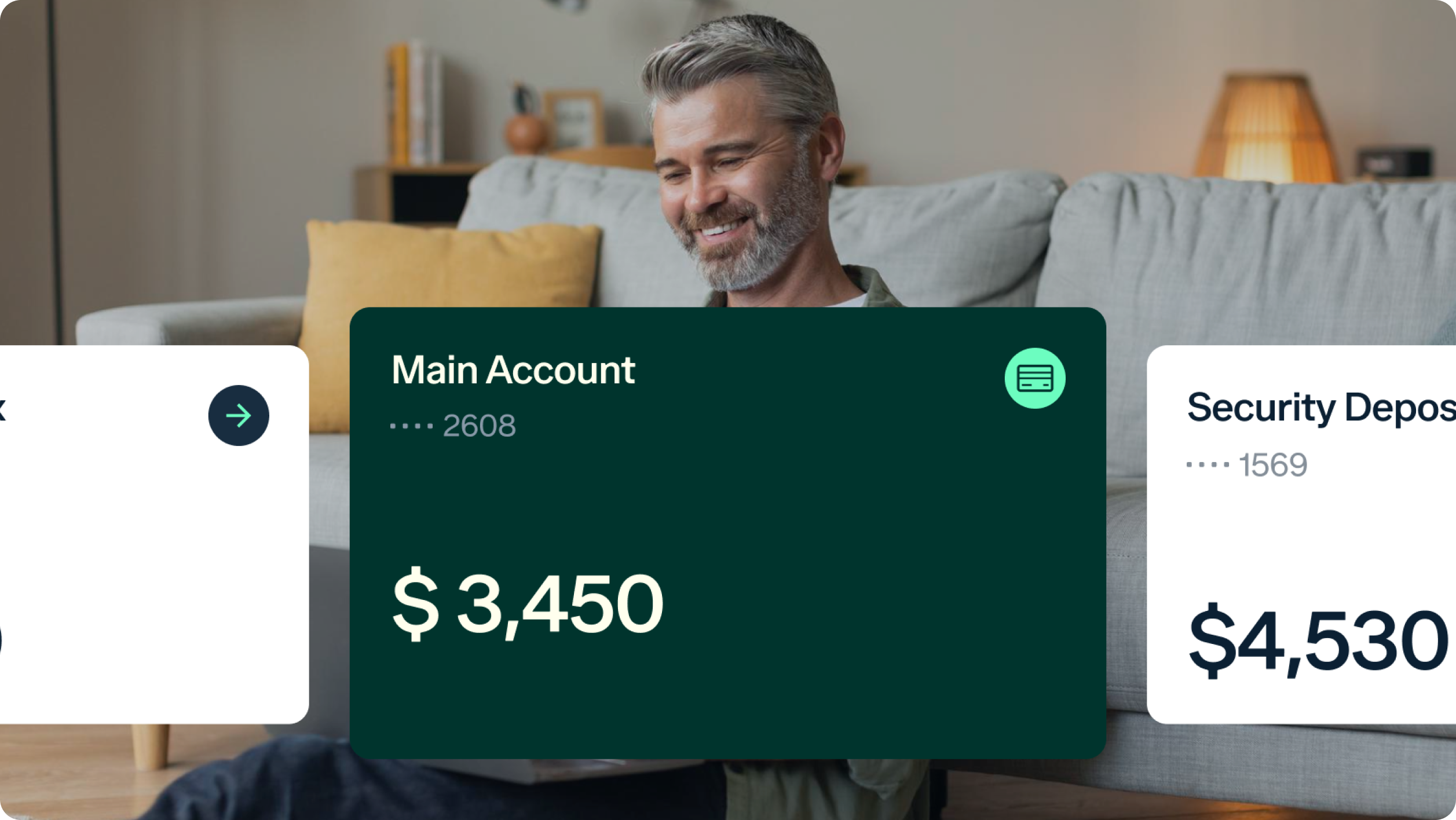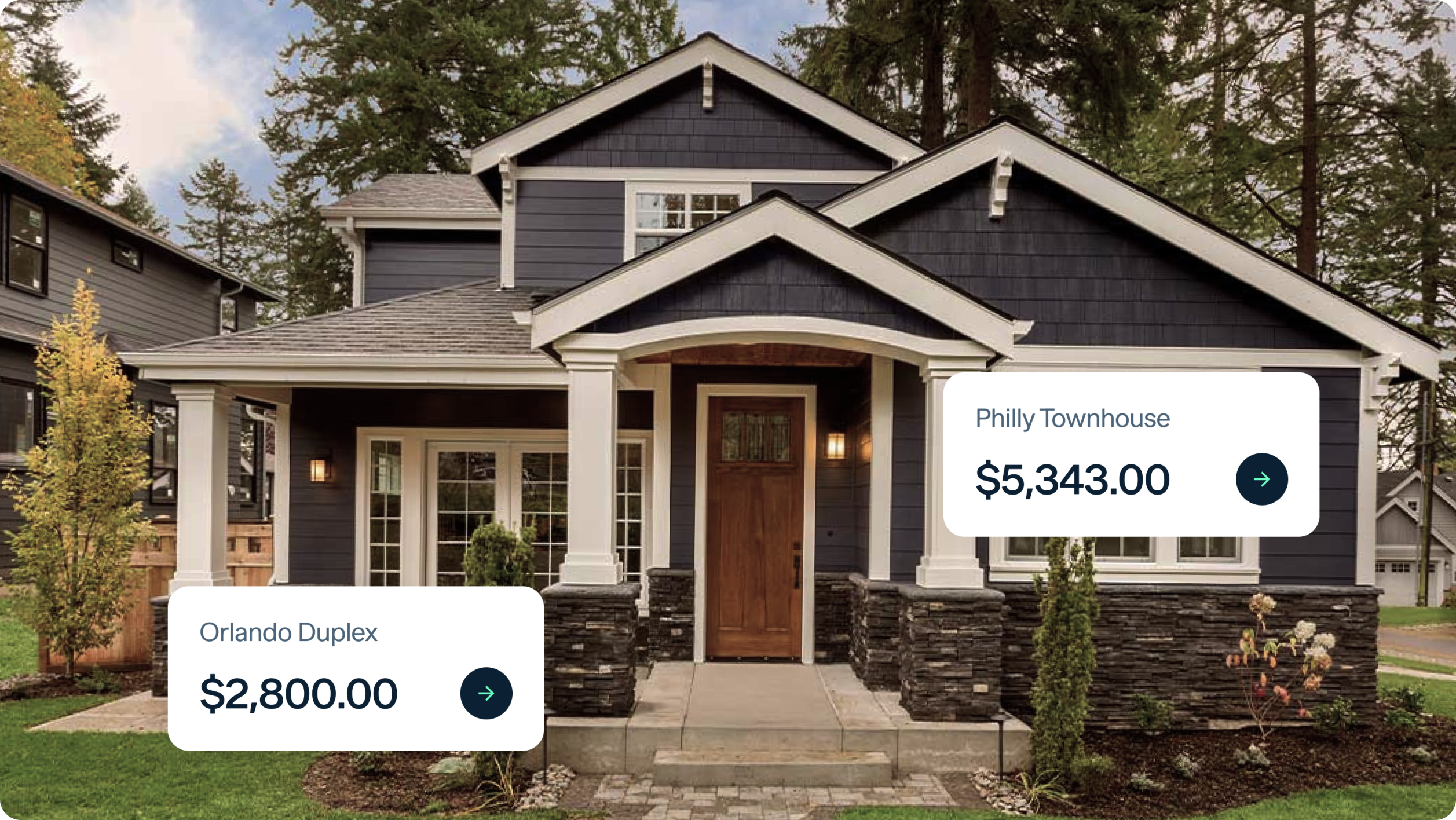Unexpected repairs, sudden vacancies, or rising insurance costs can quickly disrupt your rental property finances. As a landlord, managing these curveballs requires financial readiness. This guide explains an operating reserve and how to set up the best operating reserve account for real estate to protect your investment.
Key takeaways
- An operating reserve is a fund for unexpected property expenses and income shortfalls.
- Keeping 3 to 6 months of operating expenses in reserve is often recommended for landlords.
- Dedicated accounts, like high-yield savings accounts, are ideal for storing operating reserves.
- Operating reserves differ significantly from capital reserves and escrow funds.
- Building and managing your reserve protects your investment’s financial stability.
What is an operating reserve in real estate?
An operating reserve is a pool of funds to cover unanticipated expenses, emergencies, and income fluctuations related to your real estate investments. Think of it as a financial safety net for your rental property operations. This fund helps ensure you meet obligations even when things don’t go as planned.
An operating reserve is crucial for maintaining financial stability and operational continuity as a property owner. Without it, an unexpected repair or a few months of vacancy could derail your cash flow and put your investment at risk. It’s a fundamental component of sound real estate financial management.
What expenses do operating reserves cover?
Operating reserves are critical for maintaining financial stability in your rental business. They help you manage both expected and unexpected costs, keeping operations running smoothly even during vacancies or emergencies.
Recurring property expenses
Your reserve should account for fixed monthly and annual costs, such as:
- Mortgage payments (principal and interest)
- Property taxes
- Homeowner’s insurance premiums
- HOA fees (if applicable)
- Property management fees
- Landlord-paid utilities (e.g., water, electricity, gas)
Maintenance and capital expenditures
Ongoing property upkeep and future replacements should be factored in:
- Routine maintenance (e.g., pest control, landscaping)
- Larger capital projects (e.g., HVAC, roof, flooring)
- Appliance repairs or replacements
Vacancies and rent shortfalls
Vacant units or non-paying tenants can disrupt cash flow. Your reserve can:
- Cover mortgage and fixed costs during turnover
- Bridge the gap during missed or delayed rent payments
- Provide flexibility while finding new tenants
Insurance deductibles
Property insurance claims often require significant out-of-pocket expenses:
- Deductibles for damage from fire, flood, hurricanes, hail, etc.
- Costs can be thousands of dollars or a percentage of property value
- Reserves help fund urgent repairs and claim processing
Emergency response and property recovery
In the event of a crisis, immediate access to funds is crucial:
- Pay for emergency repairs promptly
- Maintain mortgage and utility payments during downtime
- Prevent long-term financial strain or foreclosure risk
Operating reserve vs. other real estate funds
Understanding different types of real estate funds is key to proper financial planning. An operating reserve serves a distinct purpose compared to other common funds you might encounter. Knowing the differences helps you allocate funds correctly, avoid financial stress, and make informed decisions. Especially when researching how to get a high-yield savings account to hold your reserves.
Operating reserve vs. escrow
An operating reserve covers unexpected property operating costs and income gaps. Escrow accounts, on the other hand, typically hold funds for specific, scheduled payments, most commonly property taxes and insurance premiums collected with your mortgage payment. Your lender manages this escrow account to ensure these critical expenses are paid on time, often with the help of escrow management software.
You can also use escrow for other specific purposes, like holding long-term rental and Airbnb security deposits. Unlike operating reserves, which you control and deploy for various unpredictable needs, escrow funds are designated and often managed by a third party.
Capital reserve vs. operating reserve
The distinction between a capital reserve vs. operating reserve is crucial. An operating reserve covers day-to-day unexpected issues and income shortfalls. This includes things like a sudden plumbing leak, a broken appliance, or a period of vacancy.
A capital reserve, or CapEx reserve, is for significant, long-term repairs or replacements that extend the life of the property’s major components. Examples include replacing a roof, HVAC system, or updating plumbing. While both are reserves, their purpose and funding timelines differ significantly.
How much should be in your operating reserve account?
Determining the right amount to keep in your reserve is crucial for protecting your rental investments. Whether you’re using a business bank account for landlords or searching for the best no-fee checking accounts, your reserve planning should be based on actual monthly expenses, not arbitrary numbers.
Follow industry guidelines
- For individual rental properties, keep 3 to 6 months of operating expenses on hand.
- For larger properties or homeowner associations, aim for 6 to 12 months of expenses.
- Measuring by months gives you more flexibility than setting a static dollar amount.
Measure based on monthly operating expenses
Start by calculating how much it costs to operate your property each month. This gives you a realistic benchmark for reserve planning.
Include these key expenses in your calculation
- Mortgage payments (including principal, interest, and PMI)
- Property taxes
- Insurance premiums
- HOA dues (if applicable)
- Property management fees
- Landlord-paid utilities (water, gas, electric, etc.)
- Maintenance and capital expenditure contributions
Adjust based on property and risk factors
- Older properties typically require a larger reserve due to higher maintenance risks.
- Personal risk tolerance plays a role; more conservative landlords may prefer higher reserves.
Location and local market conditions can also affect how much you need to set aside.
Recommended reserves for different property types
The ideal operating reserve real estate amount can vary slightly based on the type of property you manage. While the core principle remains the same, different property types have unique expense patterns. Tailoring your reserve helps ensure adequate coverage.
- Standard long-term rentals:
- A reserve covering 3 to 6 months of operating expenses is a widely accepted guideline.
- Covers routine repairs, minor emergencies, and brief vacancies.
- More consistent rental income allows for a slightly smaller reserve compared to short-term models.
- Short-term and Airbnb rentals:
- Higher guest turnover increases wear and tear, cleaning fees, and operational costs.
- Income is more seasonal, requiring a larger reserve to manage slow periods.
- A deeper reserve provides a buffer for inconsistent income and booking fluctuations.
- Additional costs to consider for vacation rentals:
- Guest amenities and frequent restocking
- Increased utility usage (water, electricity, internet)
- Higher property insurance premiums
- Tax obligations related to vacation rental income tax may also impact cash flow planning
Where to keep your operating reserve bank account?
Choosing the right place for your operating reserve account is critical for both accessibility and security. It should be liquid enough for emergencies, but separated from your day-to-day operating funds. This is especially important when evaluating options through the lens of business vs. personal bank decisions and learning how to choose the right bank for your rental property finances.
Maintaining a dedicated operating reserve bank account for real estate helps prevent fund commingling. Keeping reserves separate from rental income or personal finances ensures better tracking, reduces the risk of accidental spending, and aligns with best practices for responsible property management. Tracking rental income can help you keep your expenses organized.
Suitable account types
Several types of bank accounts can serve as an operating reserve account, each with its pros and cons. Your choice depends on your priorities regarding access and potential earnings. Evaluate each option based on your needs.
Checking accounts:
- Offer immediate liquidity for emergencies or urgent expenses.
- Typically earn no interest.
- May include monthly fees, so be sure to check the fine print if you’re focused on how to avoid bank fees.
- Best for convenience, but not ideal for growing your reserve over time.
Traditional savings accounts:
- Provide modest interest earnings and are generally easy to access.
- May have some withdrawal limitations, but suitable for most reserve needs.
- Help preserve value against inflation, though the growth potential is limited.
High-yield savings accounts:
- Often, the best option for operating reserves, offering much higher APY than standard savings.
- Balance of accessibility and growth, making it ideal for long-term financial health.
- Typically available online with low or no fees.
What to look for in any account:
- No monthly maintenance fees
- Competitive interest rate (Annual Percentage Yield)
- Easy fund transfers between operating and reserve accounts
- Reliable mobile access and customer support
Baselane lets you create unlimited virtual accounts, including property-specific accounts and dedicated reserve accounts for operating, capital, or maintenance needs. This helps you stay organized and easily track funds by purpose.
Banking Built for Real Estate Businesses
Open unlimited checking & high-yield savings accounts with no monthly fees.
Building and replenishing your operating reserve fund
Establishing a healthy operating reserve takes time and discipline. It typically starts when you purchase a property and grows over time. Prioritizing this fund is a key step in building a resilient real estate business.
Fund an initial reserve at purchase:
- Start with a lump sum when acquiring the property.
- Align the amount with your calculated reserve to cover early unexpected costs.
Contribute monthly from rental income:
- Treat contributions like a required expense, just like taxes or insurance.
- Even small, consistent deposits add up over time.
Use automated transfers:
- Baselane’s banking platform lets you automate reserve contributions from your rent collection account.
- This ensures regular funding without manual effort.
Prioritize stability over immediate growth:
- Reinvesting profits is important, but a strong reserve cushions against emergencies.
- Avoid setbacks by funding your safety net first.
Replenish after withdrawals:
- After using reserves, top them back up as soon as possible to maintain your financial buffer.
Keep reserves separate and trackable:
- Use a Baselane dedicated high-yield savings account to keep reserves apart from rent or lease security deposit funds.
- This separation supports clear bookkeeping and aligns with best practices, especially when tracking things like how to record cash paid for rent.
Lender requirements vs. prudent investor reserves
When obtaining financing for an investment property, lenders often require you to show proof of reserves. These requirements are typically minimums, and a prudent investor should aim for a higher amount. Lender requirements are about mitigating their risk, while your reserves are about protecting your investment.
Typical lender expectations might require showing 2 to 6 months of PITI (Principal, Interest, Taxes, Insurance) payments in reserves for investment properties. This varies based on loan type and individual financial profiles. The standard length of a mortgage doesn’t directly dictate reserve levels, but the monthly payment is a factor.
Prudent investors understand that lender minimums may not be sufficient to cover all potential operating expenses and income gaps. Aiming for the recommended 6 to 12 months of total operating expenses provides a much stronger buffer against unforeseen events. This extra cushion offers greater peace of mind and financial security.
Reserves as a tool for risk management
Thinking about operating reserves solely as an emergency fund is limiting. It’s also a powerful tool for risk management in your real estate portfolio. Having adequate reserves directly impacts your ability to handle financial uncertainty.
While metrics like Debt-to-Income (DTI) or Debt Service Coverage Ratio (DSCR) measure your ability to handle debt, reserves measure your liquidity buffer. They show how many months you can cover expenses without rental income.
Measuring your risk in months of reserves provides a clear, tangible metric of your financial resilience. A higher number of months indicates a lower risk profile. It allows you to quantify your exposure to vacancies or unexpected costs.
Using reserves vs. borrowing in emergencies
When a major expense or income gap occurs, you have options: use your reserves or borrow funds. Relying on readily available cash reserves is almost always the better strategy. Borrowing introduces risks that can exacerbate financial stress.
Relying on debt means you might not be able to access funds when you need them most, depending on market conditions or your creditworthiness. Borrowing also incurs interest costs, adding to the overall expense of the emergency. This turns a one-time issue into an ongoing debt burden.
The benefits of having cash reserves are clear: immediate access to funds without needing approval or incurring interest. This allows you to address problems quickly, prevent further damage, and stabilize your property’s financial situation efficiently.
Operating reserves for rentals in practice
Setting up a dedicated operating reserve bank account for long-term rentals, Airbnb, or short-term rentals is a smart move. While the core principle is universal, practical application varies slightly by property type. Understanding these nuances helps optimize your financial strategy.
For standard rentals, your reserve covers predictable issues like minor repairs or the occasional vacancy. Consistency in lease terms and tenant expectations helps estimate typical reserve needs. Baselane’s bookkeeping tools can help you track expenses to refine this estimate.
For Airbnb and short-term rentals, an operating reserve bank account for Airbnb should account for faster wear and tear and more frequent maintenance. Guest turnover means more cleaning, minor damage, and potentially higher utility bills if you cover them. Your reserve should reflect this increased operational intensity.
An operating reserve bank account for short-term rentals also needs to consider income volatility. Occupancy rates can fluctuate significantly based on season, events, and market conditions. A larger reserve provides a cushion during low-occupancy periods. Specific unexpected costs might relate to complying with changing short-term rental regulations or managing guest-related issues.
Open your reserve account with Baselane
Maintaining a dedicated operating reserve is key to managing unexpected expenses and ensuring stable cash flow as a landlord. To stay organized, it’s important to separate reserve funds by property and purpose.
Baselane offers a purpose-built banking and rental property management platform for real estate investors, including unlimited virtual accounts, high-yield savings, and built-in automated accounting, so you can easily set up and manage operating reserves, track expenses, and access funds when needed. Get started for free.
FAQs
An operating reserve is a dedicated fund for rental property owners to cover unexpected expenses like repairs, vacancies, or income shortfalls. It acts as a financial safety net for day-to-day property operations.
Many property managers recommend keeping 3 to 6 months of a property's typical operating expenses in reserve. Associations may aim for 6 to 12 months.
An operating reserve covers unexpected short-term expenses and income gaps. A capital reserve is for large, long-term replacements like roofs or HVAC systems.
A dedicated account separate from your operating income and personal funds is best. High-yield savings accounts are often suitable due to liquidity and interest earnings.
Yes, operating reserves are crucial for covering potentially high insurance deductibles from property damage claims.








